Transcending the Runway: Saint Laurent Productions and Rodarte’s ‘Woodshock’

In an age where artistic boundaries are fluid, luxury fashion designers transcend the runways and haute couture shows to venture into the realm of cinema. At the intersection of style and storytelling sits luxury fashion house Yves Saint Laurent, who just last year announced the start of their film production company, Saint Laurent Productions. The French fashion house is set to release its first feature film, “The Shrouds” directed by David Cronenberg this year, but this isn’t the first time luxury fashion icons have delved into the art of filmmaking. From costuming Darren Aronofsky’s “Black Swan” to releasing their directorial debut “Woodshock” in 2017, Kate and Laura Mulleavy of the fashion label Rodarte have also expanded their creative pursuits in the realm of cinema.
Fashion has always played a role in visual storytelling, and luxury fashion houses’ contributions to cinema are a testament to the blending of two art forms that share a profound connection.
French fashion designer Yves Saint Laurent established his fashion house in 1961, and has been a pioneer in women’s fashion through the creation of iconic looks associated with the brand — including the “Beat” look, the female tuxedo, the Ballet Russes and many other looks that encapsulate Saint Laurent’s famous quote, “Fashion fades, style is eternal.”
The designer’s looks made perhaps their most iconic appearance on the silver screen in the 1967 film “Belle Du Jour.”
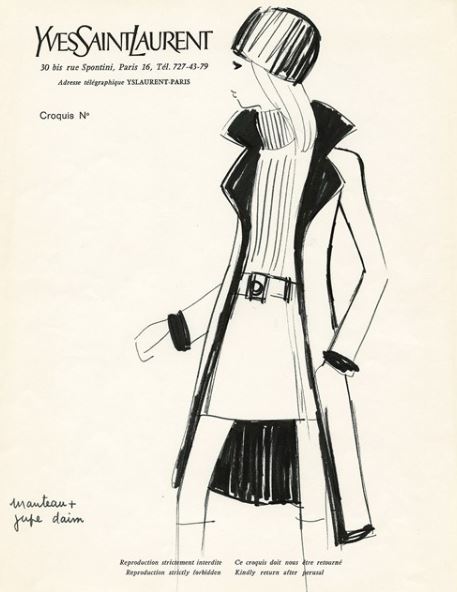
The film follows Séverine Serizy, played by Catherine Deneuve, who works at a high-class brothel in Paris while her husband, with whom she lacks a sexually intimate relationship, is at work as a surgeon. The character is described as both fragile and seductive, with the most iconic look from the film — a black vinyl trench coat — perfectly capturing Séverine’s duality. The conservative silhouette of the coat is contrasted by the stark, shiny material — offering a simultaneous juxtaposition of class and bondage.
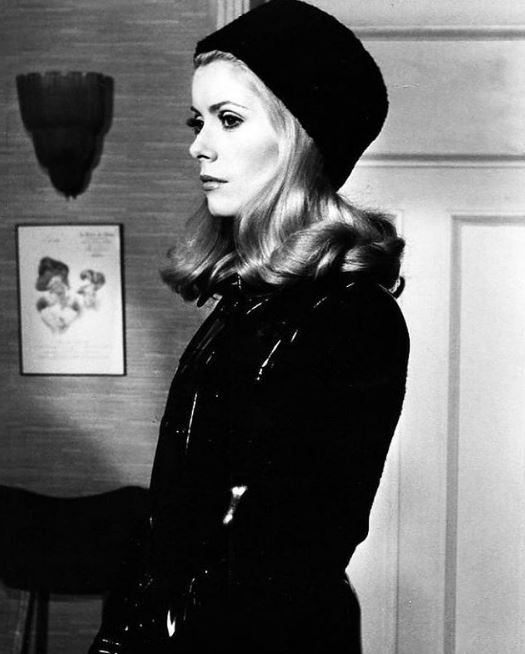
Saint Laurent’s designs for the film’s costumes were so successful that they found their way into the real world of fashion. The film’s popularity boosted sales of the iconic trench coat, which was released as a part of the 1966 SAINT LAURENT rive gauche collection, and the shoes worn by Deneuve in the film gained cult status.

Many other French films from the ’60s, including “Arabesque,” “The Pink Panther” and “La Sirène du Mississippi,” featured Saint Laurent’s costumes and pieces from his previously released collections. From Sophia Loren to Claudia Cardinale, Yves Saint Laurent made his mark on cinema through a profound understanding of the personality of women in this era, which translated into his clothing.
The dawn of the 1960s in Paris marked a new era of youth-driven fashion. Prior to this, fashion had been influenced mainly by the tastes and likings of the wealthy, and haute couture was dominated by male fashion designers who worked toward an image of ideal (elitist) feminine elegance. The ’60s ushered in a new period of fashion, with a newfound emphasis on individual expression and the rise of boutique shopping. Yves Saint Laurent’s 1966 prêt-à-porter (ready-to-wear) line made many of the previously inaccessible fashions available to the masses — demonstrating a successful adaptation of his haute couture to the youthful attitude of the ’60s.
Yves Saint Laurent’s deep understanding of the ties between self-identity and fashion translated into his costume designs, which had the power to demonstrate a character’s personality and evolution, setting the mood for a story and requiring a deep understanding of the psychology behind one’s clothing.
Given this knowledge of the brand’s successful adaptability within a creative enterprise, the announcement of Saint Laurent Productions and its upcoming collaborations with filmmakers like Gaspar Noe and Wong Kar Wai comes as no surprise.
Although production companies do not necessarily have much creative control over the look of a film, costume designers must work closely with the other members involved in making a film in order to ensure that the artistic vision comes across as accurately as possible.
Saint Laurent Productions is not the first luxury fashion house to combine fashion and filmmaking.
In 2017, Kate and Laura Mulleavy of Rodarte wrote and directed the horror/thriller film “Woodshock,” featuring their longtime friend Kirsten Dunst. The A24 film explored how a young woman coped with the death of her mother through an atmospheric, dreamlike lens that offered viewers a sort of visual extension of the aesthetics of their fashion brand.

The fashion duo famously costumed Darren Arronofsky’s “Black Swan” with over 40 pieces, including gowns, ballet tutus, ornate feathered bodices and jeweled headpieces. Rodarte collections are known for their dark (yet romantic), subversive (yet feminine) pieces, which makes sense for the brand’s involvement in a film that explores the dark duality of womanhood — especially within the context of the delicate art of ballet.
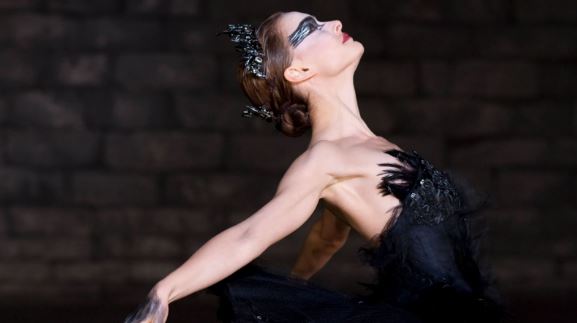
Although the sisters’ involvement in costuming the film was met with controversy and backlash, there is no denying the clear correlation between the mood of “Black Swan” and Rodarte’s aesthetic.
In an article for Vanity Fair, Laura Mulleavy describes how “[their] first relationship to clothing didn’t come from what [their] mom was wearing, it came from film.” The sisters are big movie buffs, and most of their designs aim to recreate their romantic artistic vision through clothing. On Rodarte’s official website, the pair describes their approach to fashion as being driven by “the pursuit of innovation through storytelling,” which is reflected in both their clothing line and the film “Woodshock.”

“Woodshock” opens with the main character, Theresa (Kirsten Dunst), providing her terminally ill mother with a cannabis joint laced with a poisonous substance, assisting her in a successful suicide attempt. She works at a cannabis dispensary with her longtime friend Keith (Pilou Asbæk), where they specialize in selling laced joints to help elderly and terminally ill people commit suicide. After her mother’s death, Theresa is visibly withdrawn from her job and her relationship with her boyfriend Nick (Joe Cole), and she begins experimenting with the same laced joints as a means of coping with her grief.
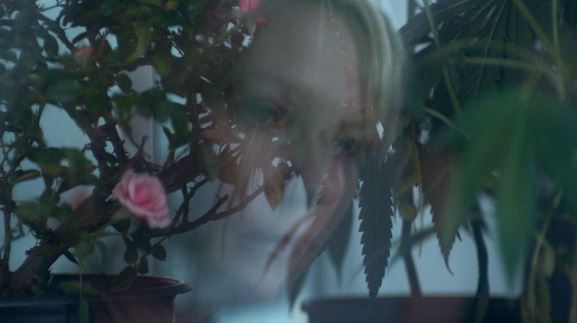
“Woodshock” received low ratings and poor reviews, but the visual storytelling is by far the most striking element of the film. The film weaves together a tapestry of haunting visuals, dreamlike montages, and ethereal landscapes that mirror the brand’s avant-garde and poetic design sensibilities. The Mulleavys make use of several experimental techniques to achieve that same dark, dreamy, romantic feel of their clothing line.
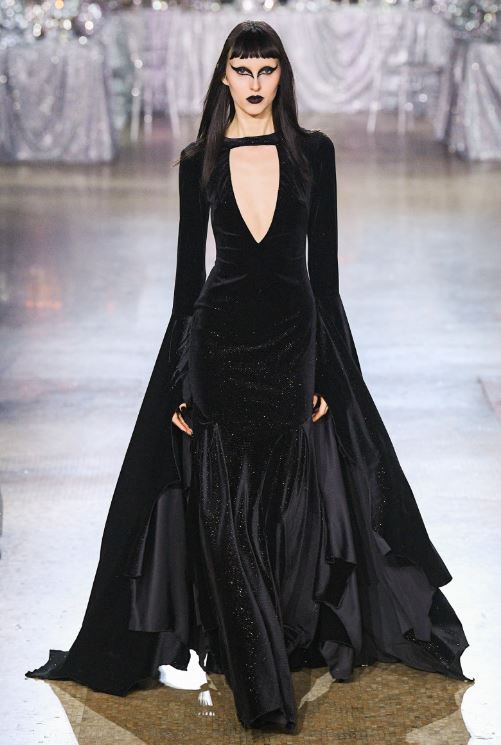

Rodarte’s fashion is hard to encapsulate in a single blurb. The ideal Rodarte girl can basically be summed up as a manic pixie dream girl, with the trope’s overtly subversive feminine aura. With nearly all of its seasonal collections including unconventional elements — from clashing polka-dotted patterns to flamboyant tulle ruffles, to pale pink ribbons and lace, to puffed satin sleeves against a structured silhouette — Rodarte’s designs range from Gothic fairy fantasies to saccharine princess gowns. The clothing line’s dreamy fantastical elements are perfectly mirrored in Woodshock’s visual aesthetic.
Several of the scenes in which Theresa is hallucinating from the laced joints feature double exposures and lens flares to help depict her inner state, and the duo makes use of color to amplify the mood of each dream sequence. The use of layered images creates an ethereal sense of interconnectedness between the landscape and the characters, while the lens flares offer a sense of otherworldliness, reminiscent of Rodarte’s incorporation of unexpected and unique elements in their fashion designs. Additionally, most of the scenes in the dispensary feature neon lighting, which casts a surreal hue over the characters and enhances the atmospheric mood.

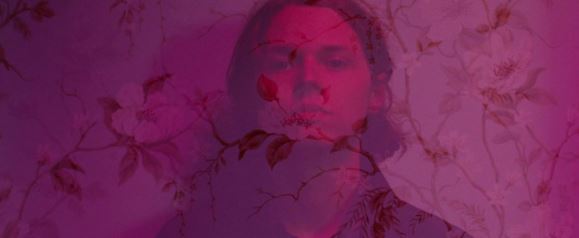
Ultimately, the film is an exploration of feeling. The dialogue and the relationships between characters come second to the imagery, which translates much of Theresa’s emotional state without needing words to communicate. While much of a character’s identity is typically translated through costume design, the sisters have instead made use of imagery and setting to depict Theresa’s inner world.
Against the backdrop of the Northern California redwood forests, the landscape also reflects much of Theresa’s isolation while offering an ethereal atmosphere. The towering redwood trees and play of light filtering through the dense foliage mirror the grandeur and intricacy often found in Rodarte’s designs. Kate and Laura Mulleavy leverage the natural beauty of the landscape to craft a cinematic tapestry that echoes the brand’s preference for the poetic.
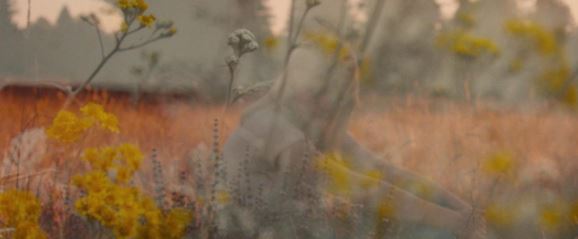
As Theresa navigates through the majestic yet haunting surroundings, the visual narrative captures the delicate interplay between light and shadow, mirroring the nuanced textures and contrasts found in Rodarte’s couture. Floral wallpapers and wildflower fields within a subdued color palette frequent Theresa’s environment, offering a very melancholic and moody taste of her femininity.
“Woodshock” ultimately becomes a canvas where the realms of fashion and film converge in a mesmerizing dance of light, color, and emotion.
With its evocative storytelling and breathtaking visuals, the film not only solidifies the Mulleavy sisters’ prowess in both fashion and filmmaking, but also marks a milestone in the exploration of the relationship between these two artistic disciplines. As Saint Laurent Productions and YSL in cinema continue the fusion of fashion and film, “Woodshock” remains a poignant example of the transformative power that arises when creativity knows no bounds — a transcendence of both the runway and the silver screen that leaves a mark on the cultural landscape.

